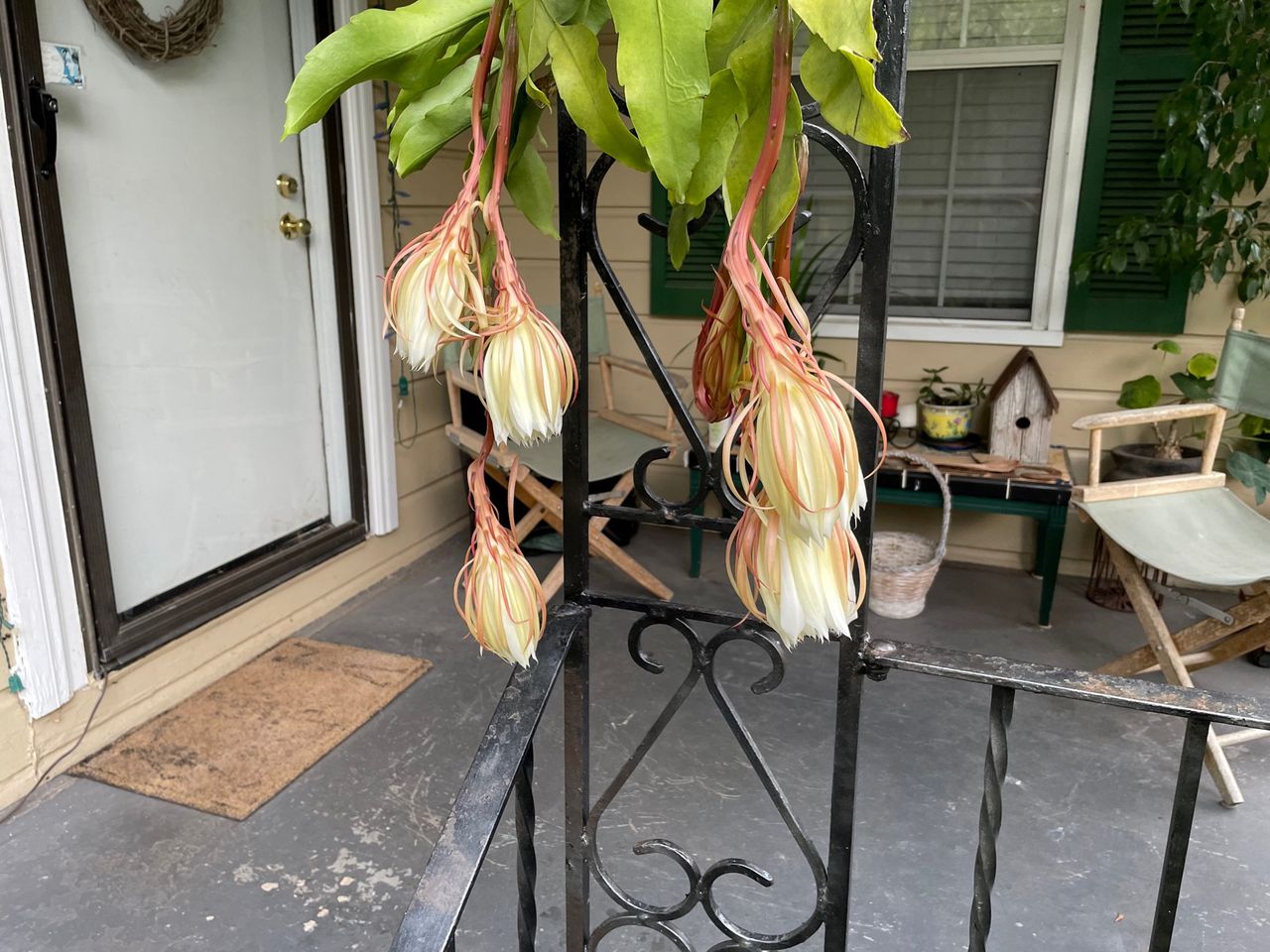Archibald: This flower opened, died, and left a mark
This is an opinion column.
I thought I was going to see a flower. Just a flower. I was wrong.
It all began with a text from my neighbor, Susan Lyons:
“This is Susan and tonight the Night-Blooming Cereus plant on my porch is going to open up 7 blossoms. Only tonight. Try to come by after 8:30. We will be on the porch catching the show and delicate unique scent.”
I remembered her night-blooming cereus. I’d seen it while walking my dogs one morning, on the day after its brilliant bloom. I was hours too late, which might as well be a day late, or a year. I missed the show and witnessed only limp and shriveled petals clinging to their sad spindly stalk.
This desert flower – a part of the cactus family, as it turns out – bursts to life on rare nights and is gone by morning. A shooting star. A Cinderella at her ball.
The cereus reminded me of my mother, who coaxed one to bloom on her front porch two decades ago. I never saw nor smelled those blossoms in person, but Mom called all her kids on the hour to report its progress through that night.
Dad took photos, and Mom made a scrapbook of the night that cactus bloomed.
So a little before 8:30 on Monday night I turned off Jalen Hurts early in the second half, and walked down my street in the dark to see a flower. To smell a flower.
I thought that was all.
The blooms had just begun as I arrived. Susan peered inside them as they opened, almost before our eyes. She pointed out the pistil and stamen and all the other parts. She worried that the cereus, being out of Arizona and its native desert habitat (where it is typically pollinated by nocturnal moths and bats) would not be able to draw the creatures it needed to perform that reproductive function.
RELATED: Read more from John Archibald
She’s tried to pollinate it herself, she said, reaching inside with a Q-Tip to swab pollen grains and spread it around. She is unsure of her success – though her plants have bloomed twice this year, which is impressive.
As Susan spoke, friends and neighbors appeared, on a weeknight on the Southside of Birmingham. They laughed and listened and cooed and sniffed and watched as this ugly duckling of a plant slowly transformed into something at least as beautiful as any swan.
This cactus, this tangle of unruly stems that flowers briefly and rarely and struggles to draw the very insect it requires to carry on its species, drew us together like moths to its glow.
A beauty made all the more powerful because of its transience.
I couldn’t help think, as I walked home in the dark, almost glowing myself, how this plant made me – made all of us – stop in the middle of this crazy, hectic, AI world. It forced us to pay attention.
Like art, or literature, or philosophy, or even religion it made us ponder beauty and life and existence and each other. It opened up, and in doing so opened senses and emotions that sometimes seem muted by the speed and will of the world around us.
And then it made us smile.
Wow.
If this stringy, ephemeral little thing can do all that in one night, just imagine what we can do.
I thought I was going to see a flower. I’m glad I was wrong.
John Archibald is a two-time Pulitzer winner at AL.com.
Day dawned after Susan Lyons’ night-blooming cereus bloomed. The flower might have been short lived, but the impact was not.
